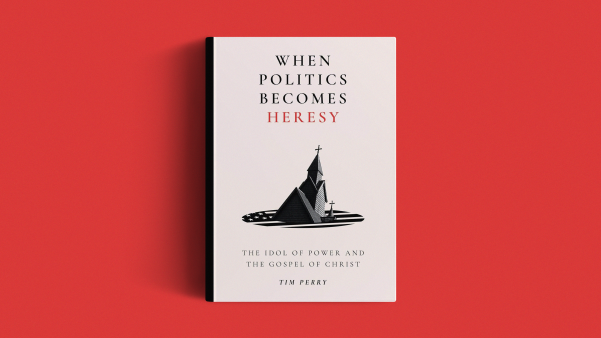Christians believe that Jesus Christ is incomparable, without a peer, but are often quite ignorant of the lives of great religious leaders with whom he may be compared. On the other hand, secularists, who are often equally ignorant, speak of Christ in the same breath with others without acknowledging any differences. Walter Lippmann in A Preface to Morals remarked, “There is no doubt that in one form or another, Socrates and Buddha, Jesus and St. Paul, Plotinus and Spinoza, taught that the good life is impossible without asceticism.…” Ben Franklin’s advice on humility was, “Imitate Jesus and Socrates.”
The Roman emperor Severus Alexander (A.D. 222–35) set up statues of Orpheus and Abraham, Christ and Apollonius, and offered them equal reverence. Mani, the founder of Manichaeism in the third century A.D., taught that just as God had sent Buddha to India, Zoroaster to Persia, and Jesus to the West, God was now sending Mani himself to Babylonia. Many syncretistic sects both here in the United States and in Japan and elsewhere attempt to combine the teachings of various religious leaders.
I. Sources
From a historian’s point of view there are serious disparities in the sources available for reconstructing the lives of, for example, Zoroaster, Buddha, Socrates, Muhammad, and Jesus. One needs to distinguish sharply between first-hand or nearly contemporary sources and later apocryphal and apologetic materials.
A. Zoroaster (628–551 B.C.)
We do have what appear to be the genuine sayings of Zoroaster in the Gathas of the Avesta. The mass of Zoroastrian texts, however, are in late Pahlavi (ninth century A.D.) recensions. Contemporary Old Persian cuneiform inscriptions betray at best only possible allusions to early Zoroastrianism. There are some Greek and Arabic authors who allude to Zoroaster. The Persian national epic, the Shah Namah by Firdausi, also includes traditions of the prophet.
B. Buddha (567–487 B.C.)
For many centuries Buddha’s teachings were handed down orally. It was in the first century B.C. in Ceylon that his teachings were first set down in writing. The earliest written texts that have been preserved are in Pali, an Indo-Aryan dialect that may or may not be the dialect used by Buddha himself. The Pali canon of the Theravada (the southern) or Hinayana school is known as the Tipitaka or “Three Baskets.” Portions of this collection, such as the Samyutta Nikaya, the Majjhima Nikaya, and the Anguttara Nikaya, may date in origin to a century after Buddha’s death, but other portions originated much later.
The Sanskrit canon of the Mahayana school, which spread to the north to Tibet, China, Korea, and Japan, dates at its earliest to the first and second centuries A.D. According to Christmas Humphreys, “the later Sutras of the Mahayana School, though put into the Buddha’s mouth, are clearly the work of minds which lived from five to fifteen hundred years after his passing” (Buddhism, 1955). In these later sources one notes a conspicuous exaggeration of the supernatural elements in Buddha’s life. It is possible that some of the parallels to the life of Christ in these sources may have been borrowed from Christianity.
C. Socrates (469–399 B.C.)
For Socrates we are fortunate in having the accounts of his disciples Plato and Xenophon as well as notices collected by Diogenes Laertius (third century A.D.). One is faced, of course, with the problem of trying to distinguish how much of Plato’s dialogues is really Socratic and how much Platonic. There is also the consideration that the Memorabilia and other writings of both disciplines were written to refute attacks on Socrates by the Sophists.
D. Muhammad (A.D. 570–632)
In the Qur’an we have the authentic sayings of Muhammad, which were at first written down on skins, palm leaves, pottery, and even the shoulder blades of sheep. Shortly after the prophet’s death the caliph Uthman (644–55) collected these sayings in a canonical edition.
Numerous oral traditions known as the Hadith circulated about the words and actions of Muhammad, involving even such details as his practice of regularly brushing his teeth. Some two centuries after the prophet’s death Al-Bukhari sifted through some 600,000 traditions to obtain 7,000 Hadith that he thought were genuine. The first life of Muhammad, based on the Qur’an and the Hadith, is the Sirat ar-Rasul by the Ibn Hisham in the ninth century.
E. Jesus
Apart from the four canonical Gospels, which were written on the basis of eyewitness evidence, we have very little else that is helpful or trustworthy. References to Christ in the rabbinical literature are veiled and hostile. The famous passage in Josephus (Jewish Antiquities XVIII:63–64) is partially authentic but is also filled with Christian interpolations (cf. P. Winter, “Josephus on Jesus,” Journal of Historical Studies, I [1968], 289–302). References in Tacitus, Suetonius, and in the letters of Pliny the Younger to the Emperor Trajan are witnesses to the spread of Christianity.
The mass of apocryphal gospels of the second and third centuries, which attribute all kinds of fanciful miracles to Jesus as a child, are interesting but historically worthless. Some scholars believe there is a remote possibility that the recently discovered Coptic Gnostic texts, such as the Gospel of Thomas, may have preserved some genuine sayings of Jesus.
[Note: In the following discussion, no sections on Jesus will be included, since the facts about his life, death, and teachings are well known to the readers.]
Ii. Birth And Family
A. Zoroaster (628–551 B.C.)
Zoroaster or Zarathustra was born into the Spitama clan, evidently in northwestern Iran, though he ministered in northeastern Iran. Greek sources placed him 6,000 years before Plato! According to Arabic sources, Zoroaster lived from 628 to 551 B.C. This would accord with the tradition that he converted Hystaspes, the father of Darius, who reigned from 522–486 B.C. Zoroaster was married three times and had several sons and daughters.
B. Buddha (567–487 B.C.)
According to legend Buddha entered his mother in the form of a white elephant—fully formed! Even in this relatively early Majjhima Nikaya we read that after his mother had given birth to him the infant Buddha stood firmly and proclaimed in a lordly voice: “I am the chief in the world, I am the best in the world, I am the first in the world. This is my last birth.”
Buddha, who is also known as Siddhartha (his given name), Gautama (his family name), and Sakyamuni (sage of the Sakya), was born in Kapilavastu, now in southern Nepal. His sphere of activity was northeast India near the Ganges River. Coming from a wealthy background, Siddhartha was married as a teen-ager. But after his wife had borne him a son, he abandoned his family to become a wandering monk.
C. Socrates (469–399 B.C.)
Socrates was born to Sophroniscus, an artisan-sculptor, and to Phenarete, a midwife. We know nothing about his youth. As Tovar has remarked, “you would think the Master was born an old man, with no childhood.”
His wife was the notorious shrew Xanthippe. Socrates remarked that if he could master Xanthippe, he could easily adapt himself to the rest of the world. Women may feel his wife was somewhat justified in thinking that Socrates should have paid more attention to the material needs of their three sons.
D. Muhammad (A.D. 570–632)
Muhammad was born in Mecca around 570 into the Quaraish tribe. His father died before he was born, his mother when he was six. The lad was raised by a grandmother and then an uncle.
As a young man he worked in the caravans of a rich widow, Khadija, whom he later married though she was twenty years his senior. Although Muslims may be married to only four wives, Muhammad himself did not abide by this limit. He had some ten wives and additional concubines. One of his favorites was A’isha, who came to Muhammad when she was but nine, bringing her toys with her. In order to justify his marriage to the beautiful Zainab, who was the wife of his adopted son Zaid, Muhammad received a special revelation (Qur’an 33:37). Despite these many unions the prophet never had a full-grown son, a fact that was to play a role in the struggles for the caliphate or succession.
Iii. Life And Teachings
A. Zoroaster
Zoroaster served as a priest of the polytheistic Iranian religion before he was converted to the sole worship of Ahura Mazda at the age of thirty. He met strong opposition to his new teaching and responded in kind by pronouncing curses upon his opponents. He succeeded in converting some of his kinsmen, and also Hystaspes, a king in eastern Iran. Zoroaster denounced the intoxicating cult of the haoma plant, and exhibited great concern for the care of cattle. For him material prosperity and godliness went hand in hand, a trait that is perhaps reflected today in the remarkable prosperity of the Parsees in Bombay, India.
B. Buddha
After six years of searching for peace through physical asceticism, Siddhartha received enlightenment while sitting under a Bodhi tree and thus became a Buddha or “Enlightened One.” He realized that the way to Nirvana was to eliminate desire not by gratification or mortification but by the Middle Way, which includes the eight-fold path of: (1) right views, (2) aspirations, (3) speech, (4) conduct, (5) livelihood, (6) effort, (7) mindfulness, and (8) contemplation. He succeeded in converting his ascetic companions, then his parents and wife, and eventually King Bimbisara.
Late legendary accounts ascribe all kinds of miracles to Buddha. By washing his hands over the seed of a ripe mango, he caused a tree to spring up fifty hands high. According to another tradition Buddha flew into the sky with fire and water streaming from various parts of his body. He performed these miracles, according to a Jataka account, in order to dispel the doubts of the gods about his mission.
C. Socrates
Socrates was impelled on his life of ever questioning his hearers by a report of the Delphic Oracle, which proclaimed that he was the wisest man in the world. Realizing that this could not be true, he ever sought to find someone who was truly wise. As he interrogated various citizens in the gymnasiums of Athens, he attracted to himself a coterie of well-born young men. Unfortunately some of his disciples, such as Alcibiades and Critias, turned out to be such scoundrels that this factor played a role in the condemnation he suffered. Socratic love, as discussed in Plato’s Symposium, was a type of idealistic pederasty or homosexual love in which an older man sought to instruct and inspire a younger man.
D. Muhammad
Muhammad received his initial vision from Allah when he was about forty. He began preaching an uncompromising monotheism that infuriated the pagan Meccans, and he was forced to flee to Medina in the famous Hijra of A.D. 622. His forces battled with various opponents and slaughtered many, including 600 Jews. The prophet did not fight in person and did show mercy to captives after the capture of Mecca.
The followers of Muhammad do not worship him and should not be called Mohammadans; the right term is Muslims, from the word Islam, which connotes their submission to the will of Allah. The five pillars of Islam are: (1) the Shahada or creed, which holds that “there is no God but Allah, and Muhammad is his prophet”; (2) Salat or prayer five times a day, facing Mecca (before the Jews of Medina rejected Muhammad, the direction of prayer was toward Jerusalem); (3) Zakat or alms; (4) fasting during Ramadhan, the ninth lunar month, with a strict fast from food and even drink during daylight; (5) the Hajj or pilgrimage to Mecca, which involves traveling around the Kaaba building and kissing the black meteorite stone enclosed in its walls—a remnant of paganism that Muhammad retained.
The Qur’an does not claim any miracles on behalf of Muhammad. But to compete with Christianity later traditions ascribed to him numerous wonders: “Butter, a part of which Muhammad had eaten, increased continually.” “A tree moved from its place of its own accord and shaded Muhammad while he slept.” “A wolf spoke and converted a Jew.” According to Francesco Gabrielli, “his character appeared to later tradition and piety as the sum of all the moral virtues …—by dint of adding to the genuine testimonies of the Prophet’s life and character the fantasies of apologetics” (Muhammad and the Conquests of Islam).
Iv. Death
A. Zoroaster
According to Al-Biruni (A.D. 973–1048) Zoroaster was killed by invading Turanians. The Shah Namah (c.A.D. 1000) describes the event:
And all before the Fire the Turkmans slew
And swept that cult away. The Fire, that erst
Zardusht [Zoroaster] had litten, of their blood did die;
Who slew that priest himself I know not.
B. Buddha
In his eightieth year as he traveled northeast of Benares, Buddha became mortally ill after a meal of pork, perhaps from dysentery. According to the Mahaparanibbana Sutta, his last words to a disciple were these:
I have reached my sum of days.… It is only, Ananda, when the Tathagata [a title of Buddha] ceasing to attend to any outward thing, or to experience any sensation, becomes plunged in that devout meditation of heart which is concerned with no material object—it is only then that the body of the Tathagata is at ease.
The Buddha is further reported as saying, “Therefore, O Ananda, be ye lamps unto yourselves. Be ye a refuge to yourselves. Betake yourselves to no external refuge. Hold fast to the truth as a lamp.”
After his death Buddha was cremated, and his ashes were distributed among eight cities.
C. Socrates
After the end of the civil war between Athens and Sparta, a political reaction set in that was partly responsible for the trial of Socrates in 399 B.C. In his famous Apology, Socrates also speaks of the lampoons of Aristophanes as being responsible for some of the accusations against him. Socrates eloquently defended himself against the charges of “atheism” and of corrupting the youth of Athens. But the jury voted 281 to 220 against him. Though he had ample opportunity to escape, Socrates chose to remain and calmly drank the poisonous hemlock. According to the Phaedo, his last words were: “I owe a cock to Asclepius [the god of healing]; do not forget to pay it.”
D. Muhammad
In 632 Muhammad became ill with violent headaches and a fever. Before he died the prophet exhorted the Arabs to remain united, proclaimed the duties of married couples, and decreed the abolition of usury and the blood feud. When he announced that if he owed anything to anyone that person could claim it, a hush fell on the crowd. One man came forward to claim a few dirhams. Muhammad finally succumbed and was buried in the house of his wife A’isha, who had nursed him during his last days. The prophet’s tomb at Medinah is the most venerated site in Islam after Mecca.
V. Relations To Deity
A. Zoroaster
It seems that Zoroaster originally preached a monotheistic worship of Ahura Mazda, the creator of two spirits—one good and another evil. Classical dualistic Zoroastrianism, which pitted Ahura Mazda against the evil Ahriman, developed only later in the Sassanian period (A.D. 226–652). Later Zoroastrianism also developed a doctrine of a Saoshyan or saviour who would raise the dead. According to Jacques Duchesne-Guillemin,
Zoroaster did not give himself out to be the redeemer. When his prayers call the redeemer who is to renew existence, he means the prince who shall accept his doctrine and realize the Dominion of Righteousness and Good Mind. He even allows the role of redeemer to any man, provided he practises righteousness [The Hymns of Zarathustra, 1963, p. 19].
B. Buddha
It is not correct to speak of Buddhism as an “a-theistic” religion, as some have. But it is a religion whose chief focus is on man himself and not on any god. The Buddhist Annual of Ceylon defines Buddhism as: “That religion which without starting with a God leads man to a stage where God’s help is not necessary.” Buddha himself came out of the polytheistic background of Hinduism. He seems to have treated even Brahma, one of the highest of the gods, with a cool superciliousness. As Junjiro Takakusu of Tokyo University explains:
The Buddha was, after all, a man, but a man with perfect enlightenment. As a man he taught men to become like himself. Though people are apt to regard him as a superman, he did not regard himself as such. He was simply a perfected man. The Buddha did not deny the existence of gods (Devas), but he considered them only as the higher grade of living beings, also to be taught by him.
By the second and third centuries A.D. Mahayana Buddhism developed a doctrine of Bodhisattvas, innumerable perfected Buddhas distributed through space and time who help mankind by their merits. According to the Lotus of the True Law, the Buddha is an eternal sublime being who appeared in human form as the saviour of mankind. The theology of Pure Land Buddhism was introduced into Japan by Honen (A.D. 1133–1212), and his disciple Shinran founded the Shin sect, which is the largest Buddhist group in Japan today. Buddhists of the dominant Amidha school in Japan believe that repeating the chant Namu-Amida-Butsu—“Hail Amida-Buddha”—will gain them access to the Western Pure Land. In Folk Religion in Japan Ichiro Hori tells us, “One nun named Anraku repeated the Namu-Amida-Butsu prayer fifty thousand times on each ordinary day and one hundred thousand times on each festival day.”
C. Socrates
Although Socrates did not fully subscribe to the old anthropomorphic Homeric deities, he was deeply devout in his own way. He was scrupulously obedient to his guiding daimonion, a personal guiding spirit. In Xenophon’s Apology, Socrates says, “When I speak of my daemon I am not introducing a new god. I believe in this divine voice as you believe.…” In his Memorabilia Xenophon says, “For myself, I have described him as he was: so religious that he did nothing without counsel from the gods.…”
D. Muhammad
The Qur’an emphatically stresses the Oneness of the Godhead not only against pagan polytheism but specifically against the Christian trinity. Qur’an 112:1–4 reads:
Say: He is Allah, the One!
Allah, the eternally Besought of all!
He begetteth not nor was begotten.
And there is none comparable unto Him.
Muhammad himself did not claim to be other than a mortal messenger (Qur’an 7:188; 17:95). On one occasion he is said to have exclaimed: “Oh, God! I am but a man. If I hurt anyone in any manner, then forgive me and do not punish me.” His fallibility is shown in the Qur’an, surah 80, where he is rebuked by Allah for turning away from a blind man who had sought him out.
Nor did he claim the power to save others. According to a tradition reported by Athar Husain (Prophet Muhammad and His Mission, 1967, p. 128), Muhammad said:
O People of Quaraish be prepared for the Hereafter. I cannot save you from the punishment of God, O Bani Abd Manaf.… I cannot protect you either, O Safia, aunt of the Prophet, I cannot be of help to you; O Fatima, daughter of Muhammad, even you I cannot save.
When Muhammad died, Abu Bakr, who was to be one of the succeeding caliphs, announced: “O men, whosoever worshipped Muhammad, know that he is dead; whosoever worshipped Muhammad’s God, know that He is alive and immortal.”
Vi. Conclusions
As we review the lives of these great men, we see that they share certain traits with Jesus. They were inspired to preach against the corruption of contemporary religion, often arousing intense opposition and persecution. Their deeds and words have attracted a host of admirers and followers.
On the other hand, to maintain that all these leaders are equivalent is to argue not from tolerance but from ignorance. Each had his own distinctive message and mission. In comparing the life and ministry of Jesus Christ with those of Zoroaster, Buddha, Socrates, and Muhammad, we discover a number of unique features about Jesus.
1. A fact that may be more significant than appears on the surface is that Jesus alone was celibate and left no earthly descendants.
2. Only Jesus came out of a background that was already monotheistic.
3. His death by crucifixion is unique. George Bernard Shaw in Everybody’s Political What’s What (1944) remarked rather cynically: “These refined people worship Jesus and take comparatively no account of Socrates and Mahomet, for no discoverable reason except that Jesus was horribly tortured, and Socrates humanely drugged, whilst Mahomet died unsensationally in his bed.” On the other hand, Jean Jacques Rousseau in “Profession de foi du vicaire Savoyard,” Emile, wrote:
What prejudices, what blindness it takes to compare the son of Sophroniscus with the son of Mary! What distance between the two! Socrates, dying without pain, without disgrace, maintained his character easily to the end.… The death of Socrates, philosophizing quietly with his friends, is the sweetest that one could desire; that of Jesus expiring under tortures, injured, ridiculed, cursed by his entire people, is the most horrible that one might dread.… Indeed, if the life and death of Socrates are those of a sage, the life and death of Jesus are those of a god.
Yet what is so unique about the death of Jesus on the cross is not its manner but its alleged redemptive meaning. The early accounts as opposed to later hagiographical apocrypha do not claim for the other religious founders the ability to redeem men and to forgive their sins.
4. Leaving out of account later legendary and apologetic materials, the early sources do not attribute miracles to these leaders as is the case with Jesus.
5. None of the others is seen speaking on his own unquestioned authority. Zoroaster and Muhammad act as spokesmen. Socrates and Buddha urge every man to consult his own conscience.
6. The followers of the others did not claim to believe in the resurrection of their leader.
7. None of the others had the audacity to claim equality with a sole, supreme Deity. Buddha seemed to have felt superior to the gods of Hinduism in the same manner in which Seneca, the Stoic philosopher, felt superior to the anthropomorphic deities of Roman religion.
Now one may question the Gospels’ claim of deity for Christ and assert that this is a product of paganism, as has Hugh Schonfield in The Passover Plot. Or one may choose to believe with George Bernard Shaw, as expressed in the preface to his play Androcles and the Lion, that Christ was sincere but deluded in believing that he was a god.
As C. S. Lewis in Mere Christianity (1955, pp. 52, 53) points out, Christ’s claim of equality with deity leaves us with few choices:
A man who was merely a man and said the sort of things Jesus said would not be a great moral teacher. He would either be a lunatic—on a level with the man who says he is a poached egg—or else he would be the Devil of Hell. You must make your choice. Either this man was, and is, the Son of God: or else a madman or something worse. You can shut Him up for a fool, you can spit at Him and kill Him as a demon; or you can fall at His feet and call Him Lord and God. But let us not come with any patronising nonsense about His being a great human teacher. He has not left that open to us. He did not intend to.
Edwin M. Yamauchi is associate professor of history at Miami University, Oxford, Ohio. Born into a Buddhist family in Hawaii, he was later converted to Christianity. He has studied the Qur’an and Hadith in Arabic. Among other subjects he teaches Greek and Persian history.










